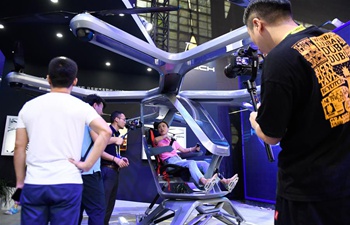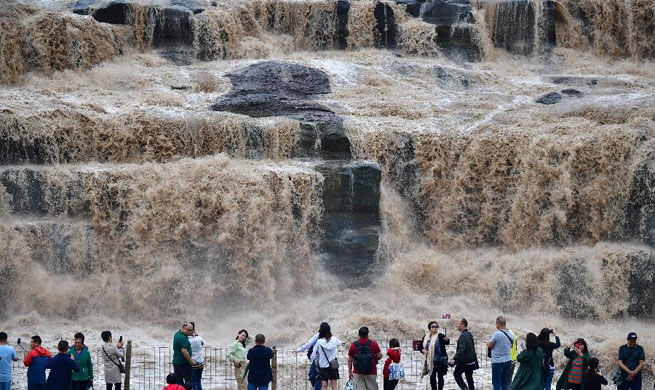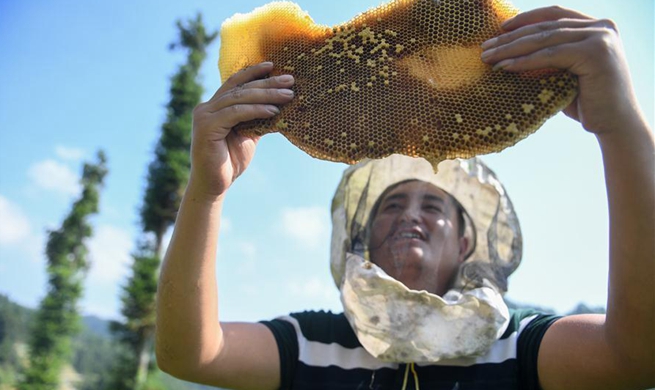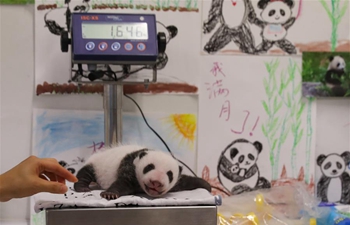WASHINGTON, Sept. 11 (Xinhua) -- Engineers at Imperial College London have invented a tiny "flying fish" robot that can use water to create a gas and launch itself from the water's surface, the university said in a release on Wednesday.
The study published in Science Robotics journal described a bio-inspired robot that can travel 26 meters through the air after take-off, which can be used to collect water samples in hazardous and cluttered environments, such as during flooding or when monitoring ocean pollution.
The only moving part of the robot is a small pump that brings in water from the environment, such as a lake or an ocean. It has 0.2 grams of calcium carbide powder in a combustion chamber.
The water and the powder combine to produce a burnable acetylene gas, and the gas, when ignited, could push the water out as a jet, propelling the robot into a glide, according to the study.
The robot, weighing just 160 grams, could generate a force 25 times its weight, giving it a greater chance of overcoming waves in rough conditions.
Also, it can jump multiple times after refilling the water tank, allowing it to take samples at multiple points without additional power.
"These kinds of low-power, tether-free robots could be really useful in environments that are normally time- and resource-intensive to monitor, including after disasters such as floods or nuclear accidents," said the paper's first author Raphael Zufferey, faculty of engineering at Imperial College London.
The team are working to test the robot in a range of environments, including monitoring the oceans around coral reefs and offshore energy platforms.

















